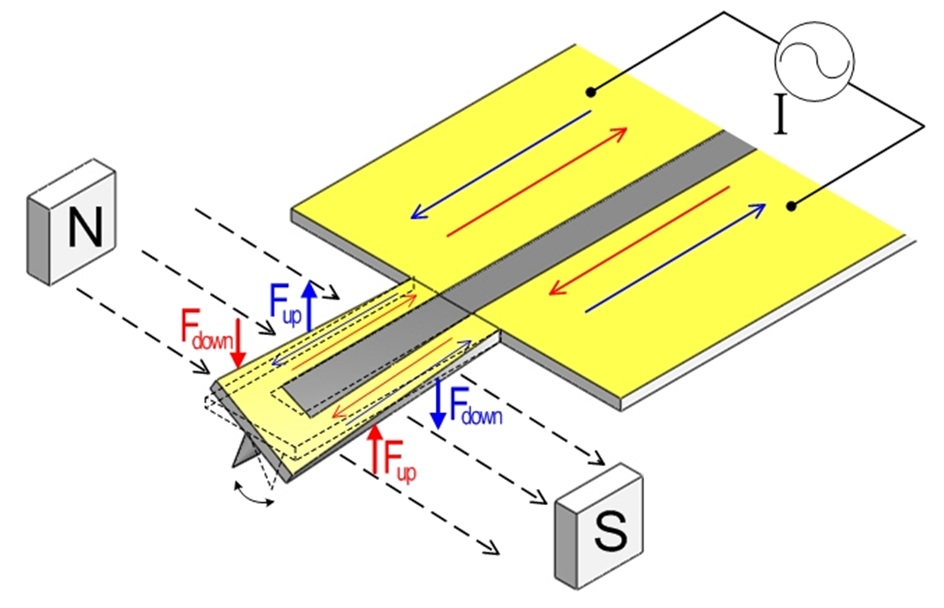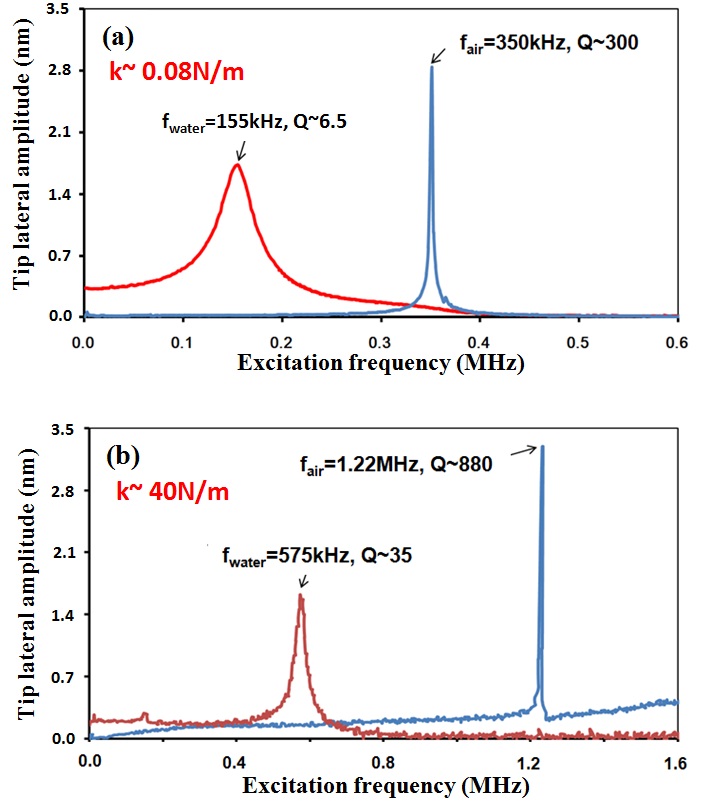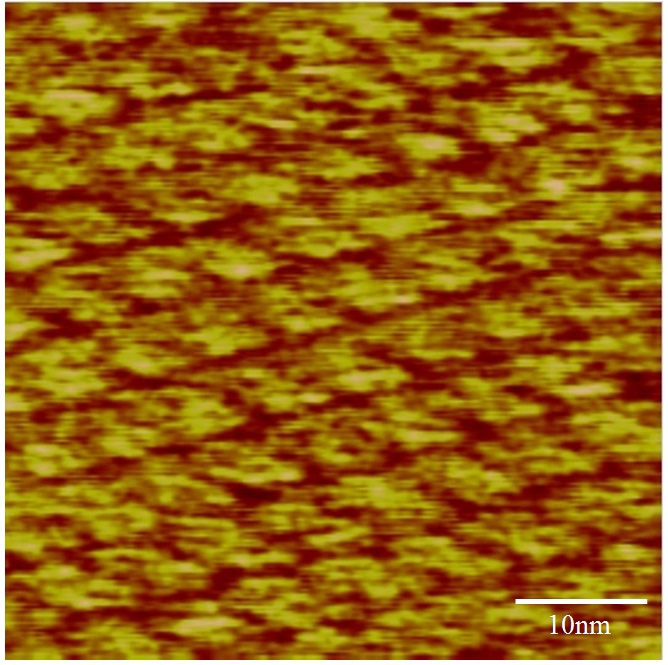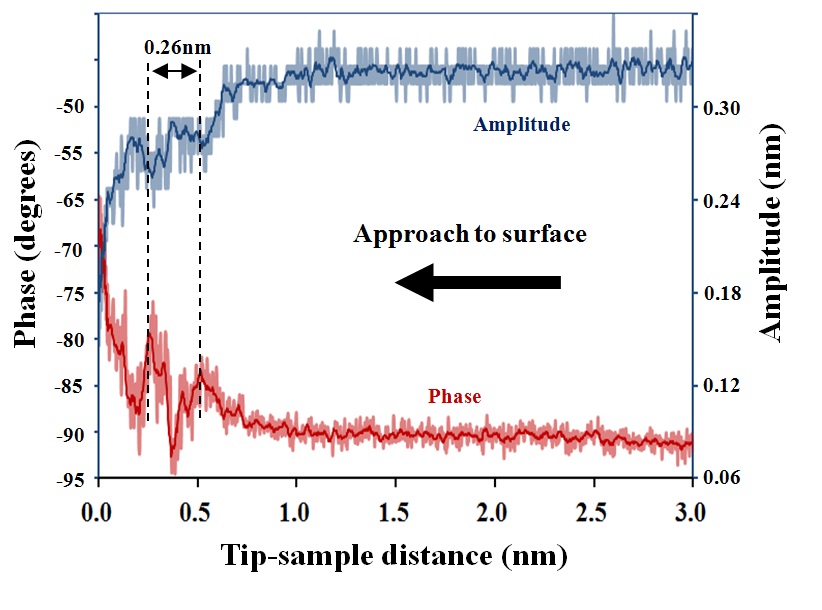IT-14-P-2107 High-Sensitivity Imaging in Liquid by Torsional Resonance Mode Atomic Force Microscopy utilizing Lorentz Force Actuation
Atomic force microscopy (AFM) [1] is a widely used technique for characterizing the structures and mechanical properties of material surfaces. However, operation in aqueous solution is still very challenging because the force sensitivity of dynamic AFM modes in liquid is usually much reduced compared with that in air or in vacuum. It has been shown that torsional resonance (TR) mode of vibrating cantilever is only affected by the tip-sample lateral force gradient, and not sensitive to the long-range normal forces [1]. The resonance characteristics (amplitude, phase, or frequency) start to change only when the tip gets in contact with the sample, which allows clear detection of the contact point and maintaining a soft contact between the tip and the sample. However, up to now, only very few types of cantilevers can be excited with pure torsional resonance in water [1,2].
Here we present a design based on Lorentz force induction to excite pure torsional resonances of different types of micro-cantilevers in air and in water [3]. Figure 1 shows the schematic of a rectangular cantilever actuated by the Lorentz force. An oscillating current passes through a cantilever which is mounted near two permanent magnets. The induced Lorentz force is equal and opposite on the two cantilever beams, resulting in a net torque to excite the torsional resonance [4]. With this actuation, pure torsional resonance of different types of cantilevers can be excited in air as well as in water, as shown in figure 2. To demonstrate the imaging capability, phase-modulation torsional resonance (PM-TR) mode is employed to resolve fine features of purple membranes in a buffer solution, as shown in figure 3. Most importantly, as shown in figure 4, force-versus-distance curves using a relatively stiff cantilever (k~ 40 N/m) can clearly detect hydration layers at a water-mica interface, indicating high force sensitivity of the torsional mode. Thus, the high resonance frequencies and high quality-factors for the tosional mode may be of great potential for high-speed and high-sensitivity imaging in aqueous environment. Moreover, this mode has a good potential and application for in-plane material characterization.
[1] Yang C. W.; Hwang I. S.; Nanotechnology 2010, 21, 065710
[2] Mullin N.; Hobbs J., Appl. Phys. Lett. 2008, 92, 053103.
[3] Yang C. W et al, Nanotechnology 2013, 24, 305702
[4] Byeonghee Lee et al, Nanotechnology 23, 055709 (2012).
This research is supported by the National Science Council of ROC (NSC99-2112-M-001-029-MY3 and NSC101-2221-E-002-022) and Academia Sinica.



